This post may contain affiliate links. Please read our disclosure policy.
Here is how to make the best oven baked salmon in just 25 minutes. It is tender and flaky, with a lemon-garlic flavor, and perfect with veggies, grains, salads, and more!
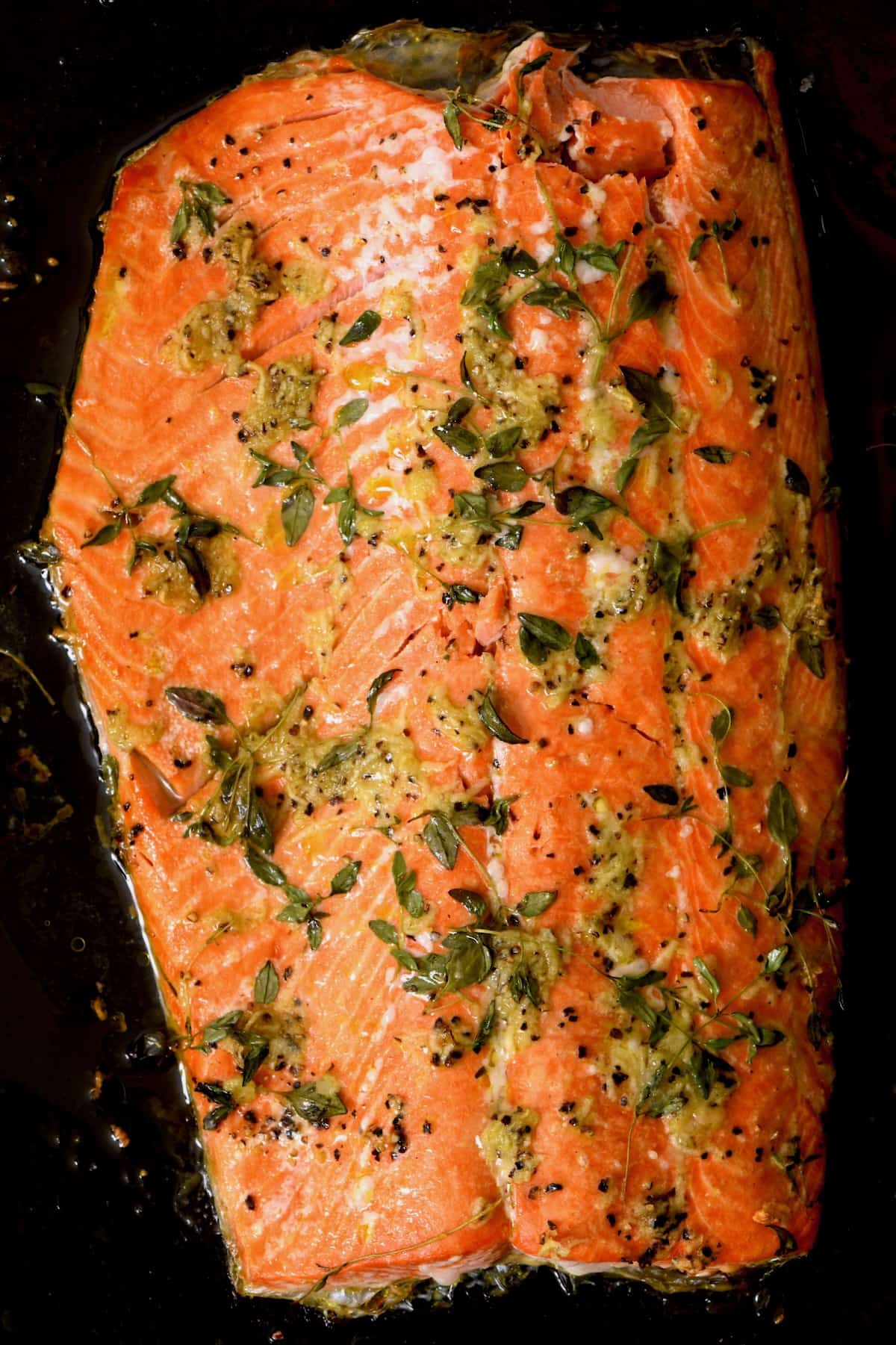
This delicious oven-roasted salmon is my basic, tried-and-tested recipe. It is simple to prepare, requires just a handful of pantry basics, and is ready, kitchen to table, in just 25 minutes! I am sharing a practically effortless method—no long marinating period is required—just brush fillets with the lemon and garlic mix and bake to perfection. Serve alongside your favorite veggies and grain for a simple, delicious, and nutritious meal any time!
Table of contents
Watch oven baked salmon video
Ingredients
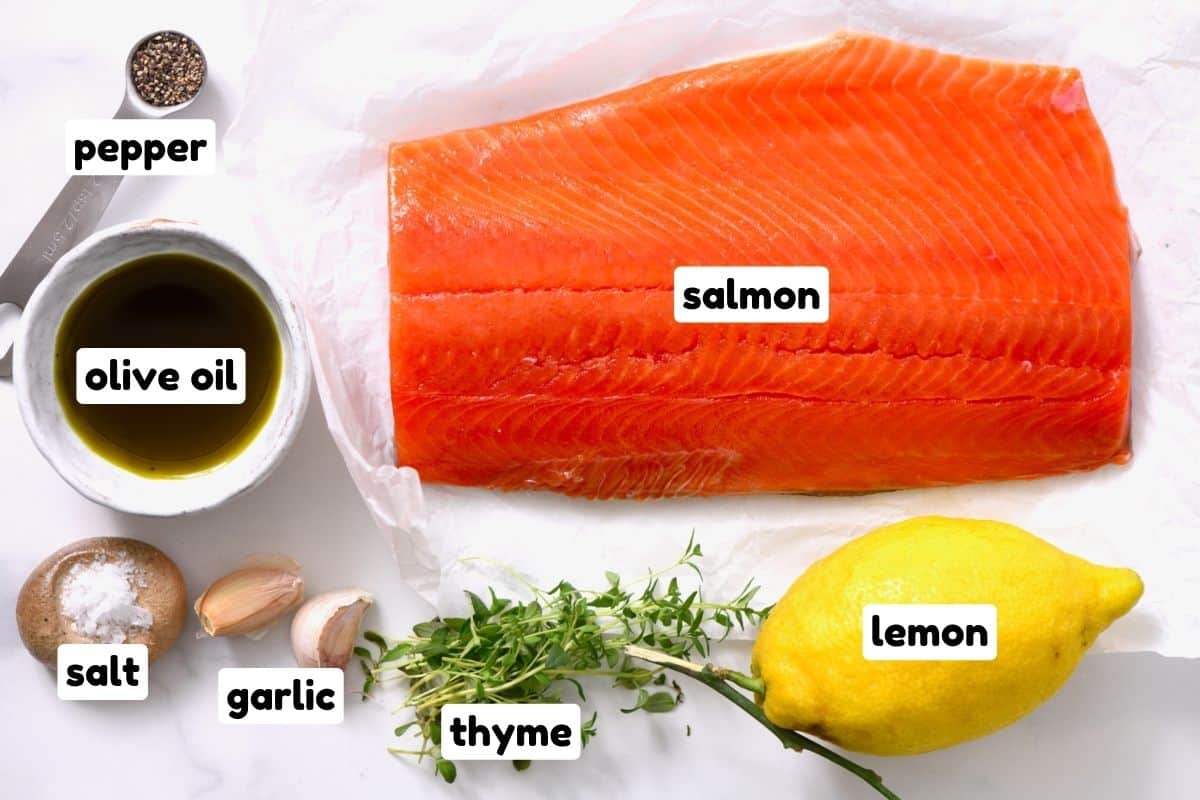
- Salmon: I recommend using wild salmon such as Sockeye, Chinook, Coho salmon, etc. Use either one large fillet or two medium ones, pre-prepared, skin-on, and de-boned.
- Oil: Olive oil or any neutral cooking oil. Melted butter would also work.
- Lemon: Fresh lemon juice (not bottled) for the best flavor. Add lemon zest for even more zing.
- Garlic: Adjust the amount to taste. Use garlic powder in a pinch.
- Thyme: (Optional) I love the addition of fresh herbs – choose your favorite.
- Salt & black pepper: Season to taste.
How to bake salmon in the oven
Prepare the Salmon: First, pat the salmon fillets dry with paper towels. Then, allow them to come to room temperature on the counter for 15 minutes. There’s no need to rinse the raw salmon.
Preheat the oven to 375ºF/190ºC and line a rimmed baking sheet with parchment paper. Then, juice the lemon and mince the garlic, adding them to a small bowl with the olive oil. Brush or rub with your hands this mixture into both sides of the salmon, seasoning it with salt and pepper afterward. Add the herbs (optional).
Bake the Salmon: Roast the salmon, skin-side down, at 375ºF/190ºC for 12-15 minutes, until the salon is a light opaque pink and flaky. The exact time will depend on the thickness of your fillets. You can optionally broil the fillets for a minute or two at the end. Finally, remove the oven-baked salmon from the oven and enjoy with your side dishes of choice!
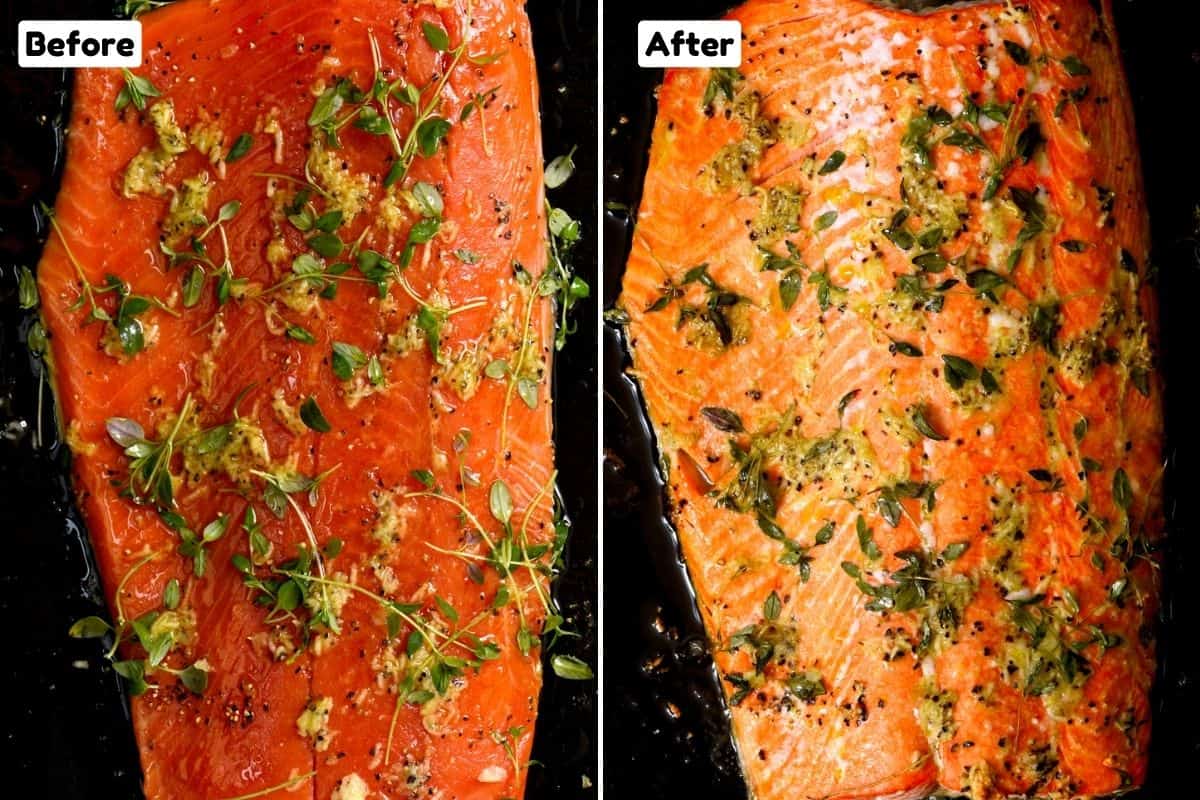
How to tell when salmon is done?
When baking salmon, cooking time varies depending on the thickness of the fillets and your oven. To ensure it’s cooked through, use a meat thermometer to check the internal temperature. Aim for 140ºF/60ºC at the thickest point. For different levels of doneness: 120ºF/49ºC for medium-rare, 130-135ºF/55-57ºC for medium, or 140ºF/60ºC for medium to well-done. Alternatively, check for color change from dark pink-red to light pink and gently prod the thickest part with a fork; if it flakes easily, it’s ready.
Tips for perfectly baked salmon
- Baking time varies: Adjust baking time based on the salmon’s thickness and your oven. If using a whole fillet, increase the cooking time by 3-5 minutes.
- Skin-on fillets: Keep the skin attached to maintain shape and moisture during cooking. If desired, you can easily remove it after baking.
- Even-sized fillets: Ensure uniform thickness for consistent cooking.
- For crispy skin: Pat the skin with a paper towel before seasoning. After baking, broil or pan-fry skin for crispiness.
- Check for bones: Even if the fillets are labeled as deboned, it’s a good idea to double-check for any remaining bones by running your fingers along the fillets or using tweezers.
- Room temperature salmon: Allow the salmon to come to room temperature for 15-20 minutes before baking. This helps ensure even cooking throughout.
- Avoid overcooking: To prevent dryness, remove the salmon from the oven when it’s slightly undercooked (about 5ºF below your target temperature). Let it rest for 5 minutes before serving to allow residual heat to finish cooking and keep the salmon moist.
What to serve with baked salmon
This versatile protein is wonderful to serve alongside all sorts of veggies, grains, and sides, such as:
- Roasted vegetables: asparagus, green beans, cabbage steaks, or cauliflower steaks.
- Grains: Brown rice, jasmine rice, quinoa, or vegetable pilaf.
- Potatoes: Roasted, baked, boiled, or mashed potatoes.
- Salad: Garden salad or kale salad.
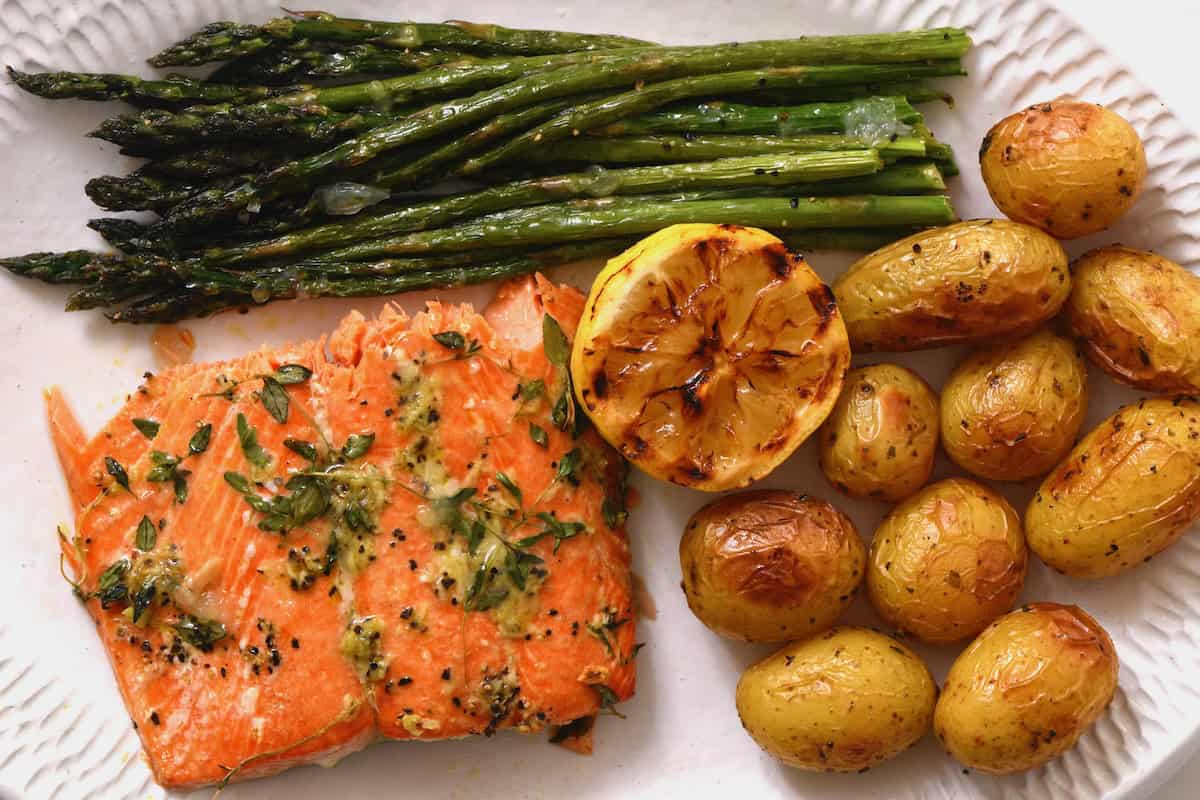
More easy salmon recipes
If you try this baked salmon recipe, let me know how it goes in the comments below. I’d appreciate a recipe card rating and would love to see your recipe recreations – tag me on Instagram @Alphafoodie!
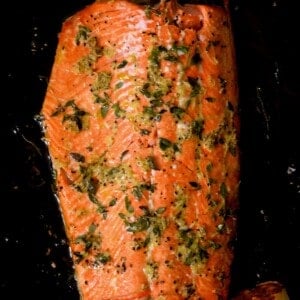
The Best Oven Baked Salmon
Equipment
Ingredients
- 1/2 lb salmon fillets 2 medium-sized or 1 large; use skin-on, deboned wild-caught salmon like Sockeye or Coho or Chinook
- 1 Tbsp olive oil or another neutral cooking oil
- 1 lemon 3 Tbsp juice
- 2 cloves garlic minced
- 1/2 tsp salt or to taste
- 1/4 tsp black pepper
- 1 Tbsp thyme or rosemary, chopped (optional)
Instructions
- Pat the salmon fillets dry with paper towels. Let them come to room temperature on the counter for 15 minutes.
- Preheat the oven to 375ºF/190ºC and line a rimmed baking sheet with parchment paper.
- Juice the lemon and mince the garlic, adding them to a small bowl with the olive oil. Brush this mixture into both sides of the salmon (or rub with your hands), seasoning it with salt and pepper afterward. Add the herbs (optional).
- Bake the salmon, skin-side down, at 375ºF/190ºC for 12-15 minutes, until it is light opaque pink and flaky. The exact time will depend on the thickness of your fillets.You can optionally broil the fillets for a minute or two at the end.
- Remove the oven-baked salmon from the oven and enjoy with your sides of choice!
Video
Notes
Nutrition
Nutrition information is automatically calculated, so should only be used as an approximation.

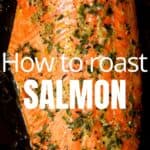
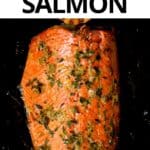
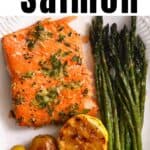

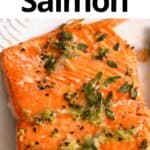

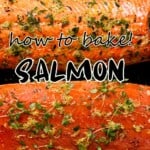
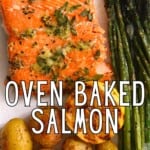
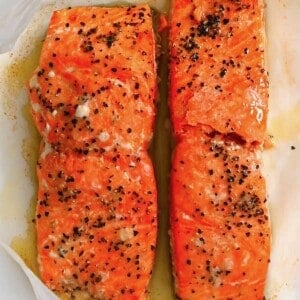
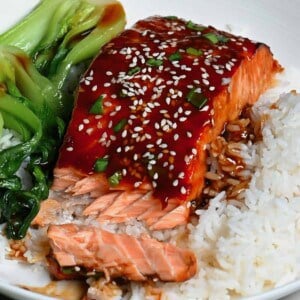
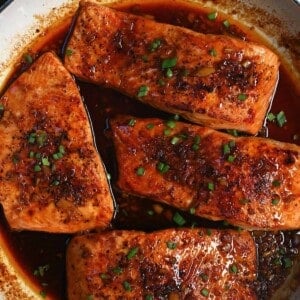









Your recipe was a big hit at the dinner table. No herbs, just the basic, garlic, olive oil and lemon juice which I combined in the blender and poured over and on under side of filets. Out of limes so I placed filets on sliced oranges that weren’t sweet enough to eat or juice. Baked in glass casserole without parchment paper. Thanks for the delicious recipe.
Thank you so much for your comment, Crystal. Glad you enjoyed the recipe!